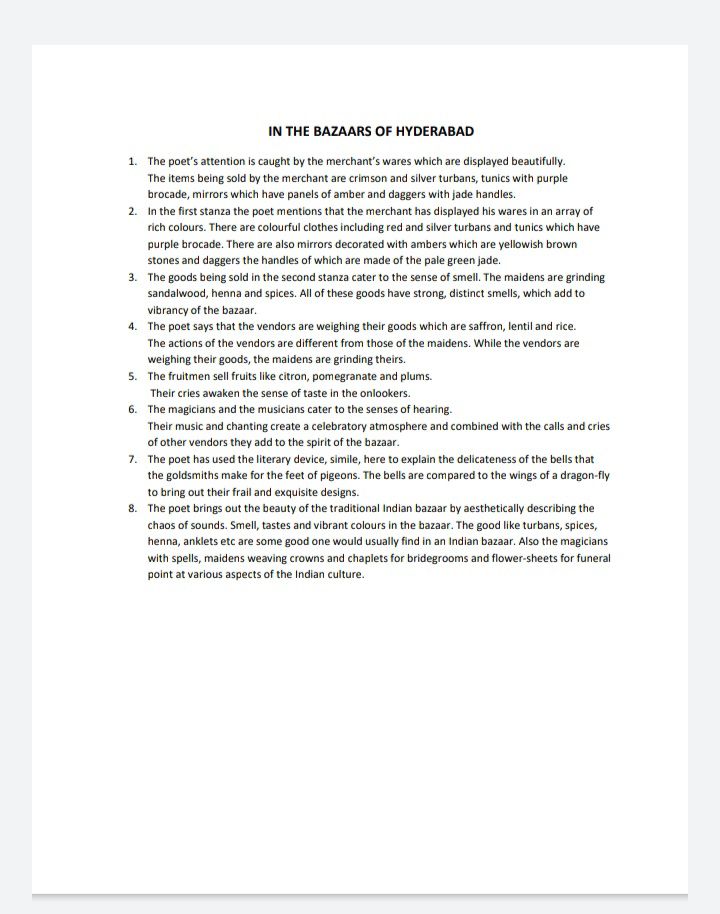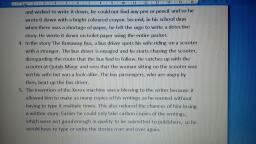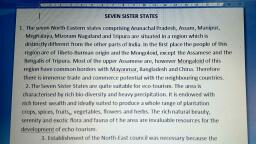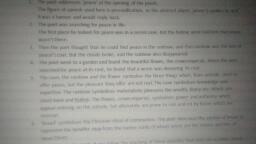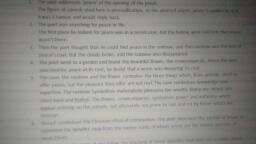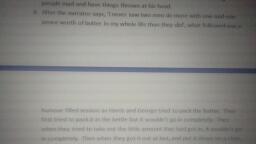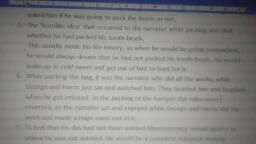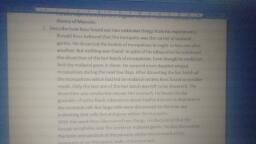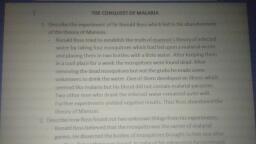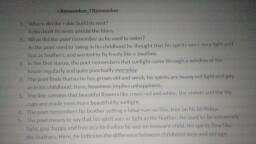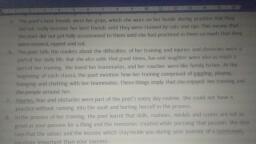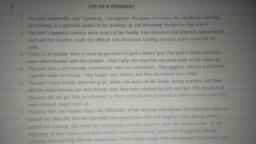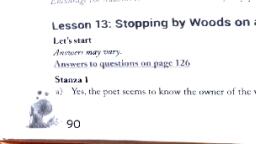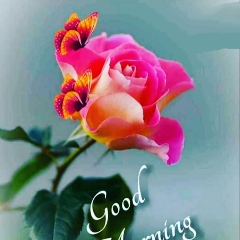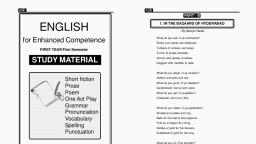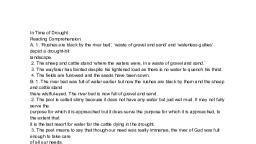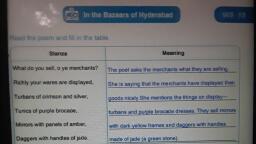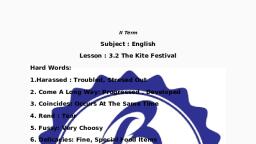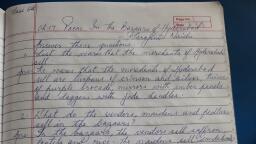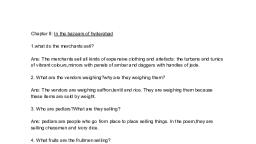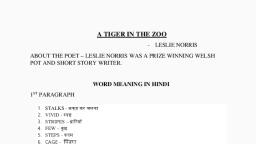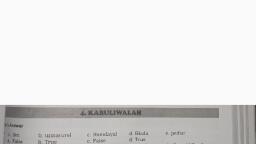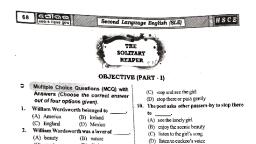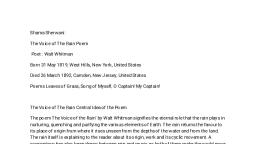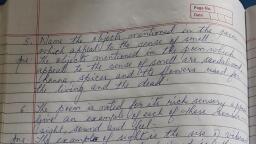Page 1 :
IN THE BAZAARS OF HYDERABAD, , ‘The poet’s attention is caught by the merchant's wares which are displayed beautifully, ‘The items being sold by the merchant are crimson and silver turbans, tunics with purple, ‘brocade, mirrors which have panels of amber and daggers with jade handles., , {nthe frst stanza the poet mentions that the merchant has displayed his wares in an array of, rich colours. There are colourful clothes including red and silver turbans and tunics which have, purple brocade, There are also mirrors decorated with ambers which are yellowish brown, stones and daggers the handles of which are made of the pale green jade., , ‘The goods being sold in the second stanza cater to the sense of smell, The maidens are grinding, sandalwood, henna and spices. Al ofthese goods have strong, distinct smells, which add to, vibrancy ofthe bazaar., , ‘The poet says thatthe vendors are weighing thelr goods which are saffron, lentil and rice., , ‘The actions of the vendors are different from those of the maidens. While the vendors are, ‘weighing their goods, the maidens are grinding thers., , ‘The fruitmen sel fruits ike citron, pomegranate and plums., , Their cries awaken the sense of taste in the onlookers., , ‘The magicians and the musicians cater to the senses of hearing., , ‘Their music and chanting create a celebratory atmosphere and combined with the calls and cries, fof other vendors they add to the spirit ofthe bazaar., , ‘The poet has used the literary device, simile, here to explain the delicateness of the bells that, the goldsmiths make for the feet of pigeons. The bells are compared to the wings of a dragonfly, to bring out thelr frail and exquisite designs., , ‘The poet brings out the beauty ofthe traditional indian bazaar by aesthetically describing the, chaos of sounds. Smell, tastes and vibrant colours in the bazaar. The good like turbans, spices,, hhenna, anklets etc are some good one would usually find in an Indian bazaar. Also the magicians, with spells, maidens weaving crowns and chaplets for bridegrooms and flower-sheets for funeral, point at various aspects ofthe Indian culture.
